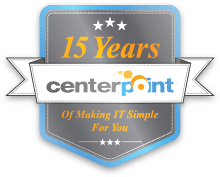
IBM has entered the SMB market and is changing the game for small businesses.
The move into the SMB market is particularly exciting because the level of sophistication and features of the new SMB products is equal to those offered to enterprises.
Enterprise-class solutions for SMBs. Believe it. We have been so excited about this stuff, that we have written 7 blogs about IBM’s Storage Area Networks (SANs), which have the same controllers as those used for enterprise SANs. The software, features, and functionality are the same.
Enterprise-class solutions for SMBs. In the last 6 blogs, we have written about many of the most thrilling features and advantages of IBM SANs. So it is about time to wrap things up and present a full case.
IBM is not always the best solution. Every business has unique needs, so you should always consult with a trusted IT advisor before making a purchase decision. Feel free to call us to ask for advice. We love to help!
Call our business managed IT services department directly at (404) 777-0147 or simply fill out this form and we will get in touch with you to set up a getting-to-know-you introductory phone call.
Fill in our quick form
We'll schedule an introductory phone call
We'll take the time to listen and plan the next steps
11285 Elkins Rd Suite E1, Roswell, GA 30076
© Copyright 2024 Centerpoint IT. All Rights Reserved. Website in partnership with Tech Pro Marketing. | Privacy Policy
Get Immediate Help For All Your Technology Issues (404) 777-0147

If you want our team at Centerpoint IT to help you with all or any part of your business IT, cybersecurity, or telephone services, just book a call.
Fill in your information below to get started today.
"*" indicates required fields
Fill in your information below to schedule now.
"*" indicates required fields
Before your organization commits to 1, 2, 3 or even longer managed IT services contract, understand what you’re getting. Centerpoint IT gives you the facts in our Managed IT Services Buyer’s Guide.
Enter your information below and we’ll send it over.
"*" indicates required fields

We are turning 15 and want to celebrate this milestone with you because without you this would not have been possible. Throughout this year look for special promotions on services and tools aimed at Making IT Simple for You so you can focus on your business.

We are turning 15 and want to celebrate this milestone with you because without you this would not have been possible. Throughout this year look for special promotions on services and tools aimed at Making IT Simple for You so you can focus on your business.
https://calendly.com/centerpoint-it/discovery-call